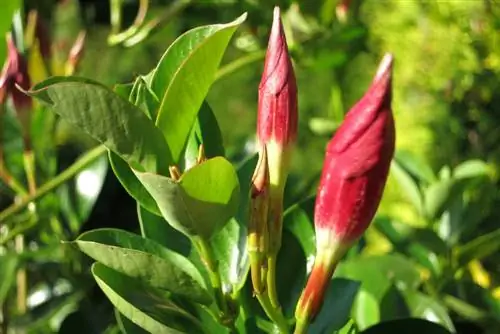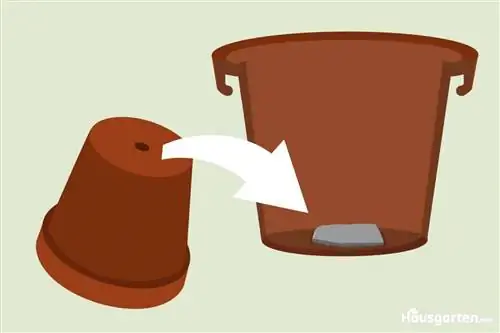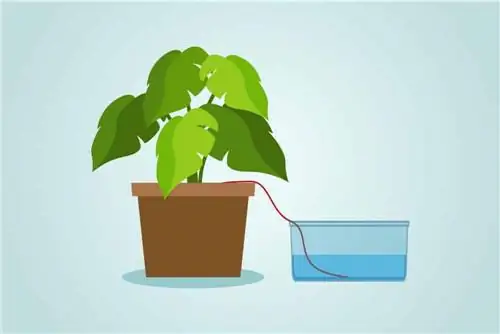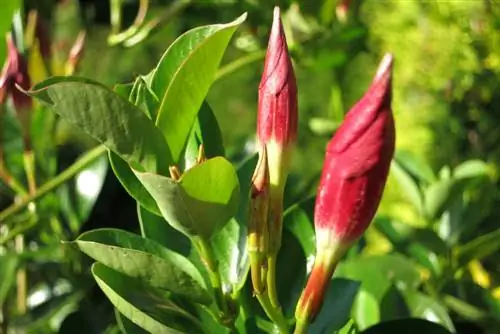- Author admin [email protected].
- Public 2023-12-17 03:39.
- Last modified 2025-01-24 12:45.
Pot and container plants need water and especially a lot of it in summer. Regular watering is therefore a must. But what do you do when you're on vacation and you can't find anyone who wants to take on the job? Then an automatic irrigation system is the solution. It takes over the water supply. You can get a complete set from a specialist retailer or build it yourself.
Principle
The name already suggests it: An automatic irrigation system automatically supplies potted and container plants with water. Ready-made systems that can be purchased from specialist retailers use a pump and a timer. The water is pumped from a storage tank or the water pipe to the individual plants via hose connections. Since every plant needs a different amount of water, the amount of water can be regulated using nozzles. The timer, in turn, ensures that watering takes place at a specific, predetermined time. In this way, two or three weeks of absence can easily be bridged without the plants drying out. However, if you are only going to be away for a few days, we recommend self-made alternatives that are significantly cheaper. Instructions for construction follow below. However, if you want to permanently switch to automatic irrigation, you can hardly avoid a complete set from the shops.
Complete sets
There are now many entry-level or complete sets for automatic irrigation on the market. Both no-name products and branded products are offered. Depending on the manufacturer and the scope, you have to pay between 40 and 60 euros for such a set. In addition, there are costs of 30 to 40 euros for a timer or an irrigation computer that can be used to reliably control the entire system. A set should contain the following parts:
- Laying hose for the main line
- Distribution hose for the supply lines to the drip nozzles
- Row drippers
- End dripper
- Connectors
- Tees
- Pipe or hose holder
- Caps
- Cleaning needles for the nozzles
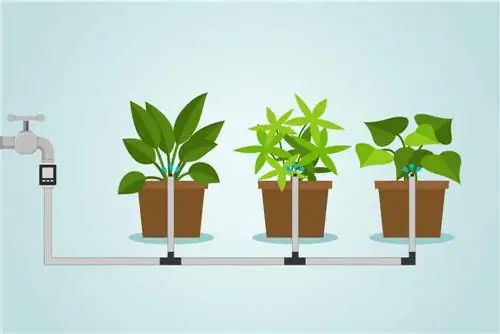
If possible, you should not skimp on the hoses or pipes for the main line and the supply line. Even in a relatively small apartment, a relatively large amount of material is required for the pipe system. However, you should get there with 15 meters each. If necessary, additional hose meters must be purchased separately. Speaking of hoses: These are something of a sticking point for every irrigation system in the home. It is very difficult or very difficult to lay them in such a way that they do not disturb or cannot be seen. Some apartment designs can easily slip.
Installation
The most commonly used irrigation system works with an irrigation computer and is connected directly to a water pipe. We therefore want to concentrate on this variant here. Before you begin the installation, a few preliminary considerations must first be made. The fundamental question is: Should the system be set up permanently or only for the period of absence. If the latter is the goal, the plant pots to be watered can be concentrated in one or two places in the apartment. This makes laying the supply and drainage lines much easier. However, for a system that is intended to be used permanently, the effort is significantly greater. The main thing that needs to be clarified in advance is where exactly the lines should and can run. When installing, proceed as follows:
- Lay out the main line so that all plant pots can be reached from it
- Cut the distribution hoses to the plant pots and place them in the right places
- Cut the main line and reconnect it with a T-piece
- Place the supply line on the T-piece
- Attach the drip nozzle to the other end of the supply line and lead it to the plant pot or attach it there
- Attach the watering computer to the end of the main pipe near the tap
- Install computer using connector on faucet
The various systems offered in stores all work according to the same principle. However, there are sometimes subtle differences. It is therefore important to follow the enclosed installation instructions. This usually also tells you how the irrigation computer is programmed or what pressure the water pipe must emit.
Alternatives
If you want a really reliable irrigation system for your apartment and balcony, you can't avoid the professional option described above - especially if you're going to be away for two or three weeks. However, if you are looking for a simpler solution and want to bridge a maximum of four or five days, you would also be well served with a home-made irrigation system. Building this yourself is usually no problem. However, there are a few points that need to be taken into account so that you don't get a nasty surprise after your vacation. The biggest problem that can arise is waterlogging, which damages the roots of the plants. That's why the plant substrate is particularly important among the possible alternatives, depending on the variant.
PET bottle(s)
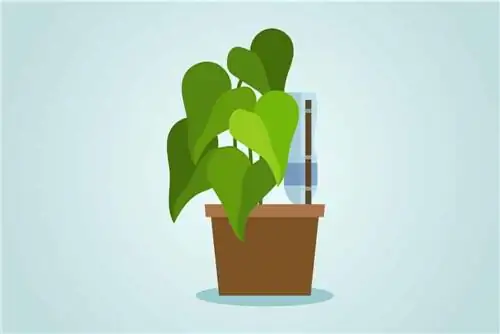
Perhaps the simplest form of an irrigation system can be implemented with one or more PET bottles. To do this, simply remove the screw cap, fill the bottle to the brim with water and then stick it upside down into the ground. The bottle may need to be stabilized with a small bar to prevent it from tipping over. The best way to do this is to stick the strip to the bottle with strong adhesive tape. The problem with this method, however, is that water constantly runs into the plant substrate. Nothing can be changed about that. However, the effect can be mitigated by using a special loose and extremely water-permeable substrate. This allows the water to drain extremely easily. To prevent waterlogging, the plant pot should be elevated on a base with a very large capacity.
Tip:
When inserting the neck of the bottle into the plant substrate, be sure to close the opening with your hand for as long as possible to prevent the water from immediately pouring onto the plant.
String irrigation
Another, less risky form of irrigation is using a string. The principle behind it is simple: you fill an empty container with water, attach one or more wool threads to it and then guide it into the planter. Of course, the threads in the storage container also have to be in direct contact with the water for the whole thing to work. In principle, so-called thread irrigation is nothing more than drip irrigation. The water supply is permanent, but with relatively little liquid within a certain period of time. However, under no circumstances should threads made from sheep's wool be used. These still contain a relatively high amount of animal fat, which inhibits the flow of water or even makes it impossible. Cotton threads make more sense and are far more effective.
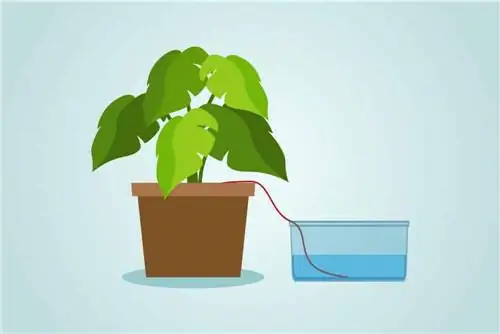
Tip:
Trade offers special, relatively thick cotton wicks that are perfect for this simple irrigation system.
Bucket
Even with a simple bucket, you can construct an irrigation system that works. To do this, you drill a few small holes in the bottom of the bucket and then insert hoses into them that are led to the individual potted plants. Of course, the ends of the hose must sit firmly and tightly in the drill holes so that the water that is then fed into the bucket cannot leak. You simply hang the bucket by its handle on a hook in the ceiling. With this system, however, the water must not run directly into the plant substrate, otherwise massive overwatering will inevitably occur. Rather, the hose ends are placed in terracotta balls, which in turn have their tips stuck in the substrate. In this way, a controlled release of water can take place.
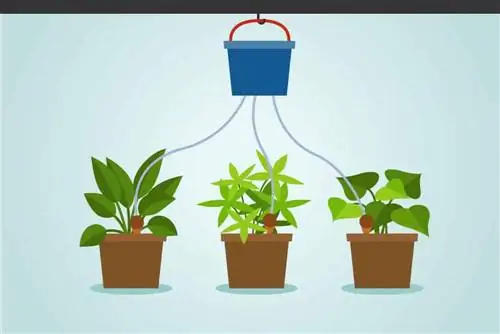
Water reservoir
Finally, an extremely safe irrigation method that is easy to build yourself. You simply create a water reservoir from which the plant can use itself when necessary. Specialist retailers have special planters with an integrated water reservoir available for this purpose. Since they are relatively expensive, you can easily build the whole thing yourself using two buckets of different sizes. Here is a short guide:
- The smaller bucket serves as a water reservoir
- Cut a small hole in the bottom of the larger bucket
- Put a cotton wick in this hole
- Fill the reservoir bucket with water
- Put the larger bucket into the smaller one
- Due to the difference in size, there is inevitably a cavity at the bottom for the water
- Then place the planter directly over the hole or wick
- The wick should come into contact with the soil via the opening in the bottom of the planter
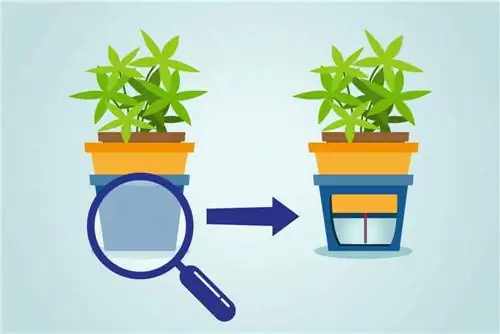
The water reservoir method works relatively reliably. The roots of the plants in the ground suck in the water, so to speak. However, the water supply is naturally very limited, which is why this solution is only suitable for a vacation that is over after a few days.
Further measures
If you want to build your own irrigation system for your vacation, you can at least extend your absence a little with a few preventative measures. For example, it is advisable to increase the volume of the plant substrate. In this case, more volume also means more storage capacity for the water. If necessary, the plant must be repotted into a larger container. A change of location can also make sense.
Because: The less sun a plant has, the less water it needs. A sun-hungry plant can be in the shade or partial shade for a few days. Finally, clay planters also help to extend the time away. Water diffuses into the ground through the clay. You take advantage of this by first tightly closing the hole in the bottom of the pot and then placing the entire pot in a kind of water bath.

